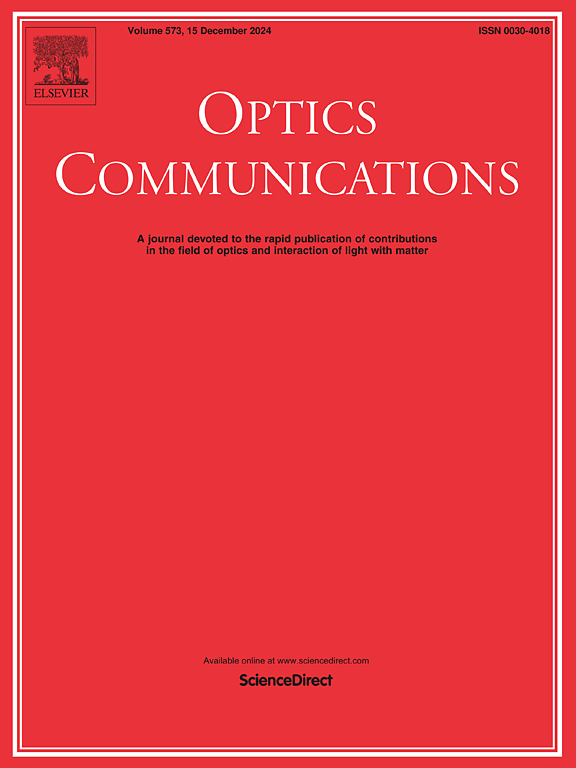基于随机光栅的超小型高效宽带层间耦合器的逆向设计
IF 2.2
3区 物理与天体物理
Q2 OPTICS
引用次数: 0
摘要
利用粒子群优化算法反向设计了基于随机光栅的超紧凑高效宽带层间耦合器。通过调整像素状态获得最佳结构,从而实现 1550 nm 波段的最大耦合效率。双层耦合器由两个垂直重叠的带有随机光栅的反锥形波导组成。耦合长度为 4 μm,层间间隙为 200 nm,耦合效率在 1550 nm 波长处达到 93%,在 1503∼1600 nm 的宽带波长范围内,TE 和 TM 模式的耦合效率均超过 90%。在波导偏差达 100 nm 的情况下,耦合效率仍能保持在 90% 以上,表现出很高的工艺误差容限。长度为 4 μm 的反向设计耦合器的性能高于长度为 10 μm 的传统波导。为了实现更长的传输距离,通过级联两个双层耦合器,提出了一种三层层间耦合器,该耦合器在 600 nm 间隙处的耦合效率高达 85%,是双层结构的 30 多倍。这项研究为开发支持高集成度硅基光子集成电路的超紧凑高性能层间耦合器铺平了道路。本文章由计算机程序翻译,如有差异,请以英文原文为准。
Inverse design of ultra-compact high-efficiency broadband interlayer couplers based on random gratings
Ultra-compact high-efficiency broadband interlayer couplers based on random gratings are inversely designed by particle swarm optimization algorithm. The optimal structure is obtained by adjusting the pixel state to achieve a maximum coupling efficiency in 1550 nm band. The two-layer coupler consists of two vertically overlapping inverse taper waveguides with random gratings. With a short coupling length of 4 μm and interlayer gap of 200 nm, the coupling efficiency reaches 93% at a wavelength of 1550 nm, and exceeds 90% over a broadband wavelength range of 1503∼1600 nm, for both TE and TM mode. The coupling efficiency can maintain no less than 90% at a large waveguide misalignment of >100 nm, exhibiting high process error tolerance. The performance of the 4 μm-long inverse-designed coupler is higher than the conventional waveguide with a much large length of 10 μm. To achieve longer transmission distance, a tri-layer interlayer coupler is proposed by cascading two bi-layer couplers, which exhibits a remarkable coupling efficiency of 85% at a gap of 600 nm, more than 30 times higher than the bi-layer structure. This work may pave the way for the development of ultra-compact high-performance interlayer couplers supporting high-integration Si-based photonic integrated circuits.
求助全文
通过发布文献求助,成功后即可免费获取论文全文。
去求助
来源期刊

Optics Communications
物理-光学
CiteScore
5.10
自引率
8.30%
发文量
681
审稿时长
38 days
期刊介绍:
Optics Communications invites original and timely contributions containing new results in various fields of optics and photonics. The journal considers theoretical and experimental research in areas ranging from the fundamental properties of light to technological applications. Topics covered include classical and quantum optics, optical physics and light-matter interactions, lasers, imaging, guided-wave optics and optical information processing. Manuscripts should offer clear evidence of novelty and significance. Papers concentrating on mathematical and computational issues, with limited connection to optics, are not suitable for publication in the Journal. Similarly, small technical advances, or papers concerned only with engineering applications or issues of materials science fall outside the journal scope.
 求助内容:
求助内容: 应助结果提醒方式:
应助结果提醒方式:


